It’s no secret that craft breweries are popping up left and right across the United States. Boulder-based Brewers Association counted 2,538 breweries in 2013, topping the previous high of 2,011 in 1887 before prohibition killed all the fun.
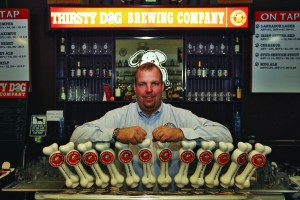
John Najeway of the Thirsty Dog Brewing Company in Akron, Ohio. “Brewing is a tough manufacturing business.”
One region that has taken a particular liking to the craft brewery crazy is the Rust Belt. Given the area’s manufacturing roots and blue-collar work ethic, it’s a pairing that has worked just as nicely as hops and barley. A brewer’s shop layered in steel barrels and technical equipment doesn’t look entirely unlike a manufacturing hub. And in Milwaukee, Detroit and Akron – they’re just fine with the comparison.
“Commercial Brewing Is Manufacturing”
Milwaukee has been in the manufacturing game as long as any other Rust Belt city. Matt Krajnak of Lakefront Brewery, aptly nestled in the north side neighborhood of Brewers Hill alongside the Milwaukee River, says a few of their employees even come from traditional manufacturing.
“One of our packaging technicians came from the paper manufacturing industry,” Krajnak explains. “I myself worked assembly and did CAD drafting at a hydraulic fittings plan, and brewery president Russ Klisch was a chemical engineer with Johnson Controls’ battery division.”
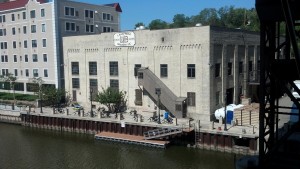
Lakefront Brewery in Milwaukee’s Brewers Hill neighborhood. After years of desolation from a nearby tannery that left a brownfield when it shut down, the area is finally coming back to life.
Suffice it to say, these laborers have found a comfortable transition in craft brewing. “Commercial brewing is manufacturing, so the skills learned in those sectors translate to usable skills here at Lakefront.”
John Patrick Najeway at Thirsty Dog Brewing in Akron’s University Park neighborhood sees the similarities, too. He calls brewing a “tough manufacturing business.” Listening to him describe his staff of 30 to 40 individuals, including microbiologists and packaging line employees, it’s easy to see why.
Down at Motor City Brewing Works in Detroit, John Linardos feels his brewery is also steeped in manufacturing history even though none of his employees come from factory employment.
“I would say most of them, including myself, were born from those who did,” he explains. And like the old days, most everyone who works at Motor City Brewing Works lives in the neighborhood. This is key for a city that has been bleeding population since the 1950s.
“Barometer” of Urban Health?
Similar cities like Cleveland, St. Louis and Pittsburgh have seen an increase in residential and economic activity surrounding craft breweries. This isn’t necessarily because Rust Belt cities are particularly heavy drinkers (though some research supports the notion), or that breweries are the cure-all for a city’s woes. After all, Detroit is still bankrupt despite recent craft brewery success and not much has been done since around the country to prevent the next major American city from going bankrupt. A craft brewery will not save whichever city wins that unfortunate lottery.
Instead, the increasing presence of craft breweries in these Rust Belt neighborhoods is reflective of a growing preference of Americans to walk to work and patronize local establishments. Linardos, however, has not yet seen a complete turnaround of his respective neighborhood, but notes that new businesses have been stopping by with questions. “That alone has been somewhat of a barometer for the increased activity in this part of town.”
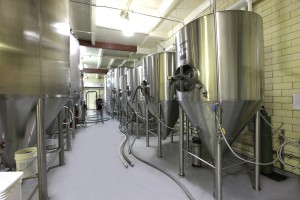
Thirsty Dog’s large brewing facility. Expansion plans are in the works, in what was once a slum section of Akron.
Najeway, however, has seen a significant transformation take place in University Park since they came in almost a decade ago to an area overrun by slum housing and dilapidated warehouses. But when they moved into a century’s old building that once was itself a brewery, developers almost immediately began to pump $13 million into college housing for the nearby University of Akron. Increased foot traffic by patrons and employees of the brewery made others feel safe about the formerly gritty location. Now new businesses, such as a concrete cutting store and an electrical business surround the area.
Increasing activity around Lakefront’s Brewers Hill neighborhood was particularly challenging for Krajnak because of the neighborhood’s former occupants. Albert Trostel & Sons Co. tannery operated on the same street as Lakefront into the early 1980s. “After the tannery closed its doors, most of Commerce Street was declared an EPA brownfield due to tanning chemicals that had seeped into the ground.”
Naturally this led to Brewers Hill becoming desolate for several years. Krajnak credits an apartment complex called Brewers Point for starting the revitalization process, followed quickly by Lakefront Brewery.
Krajnak has faith in the power of a craft brewery’s ability to play a role in the continued revitalization of a neighborhood like Brewers Hill. “A craft brewery brings a special liveliness to a neighborhood as part drinking establishment and part tourist destination,” he explains, noting the increased foot traffic a brewery brings might make developers more interested in surrounding properties. “An urban developer may see burnt out industrial wasteland or abandoned inner-city lots as opportunities instead of eyesores. I like to think of Lakefront as the best marketing tool the Brewers Hill neighborhood has.”
Najeway agrees, summing up why he believes craft breweries in particular have a positive impact on a struggling urban neighborhood’s renaissance.
“It’s a social business, just like beer is a social consumption product,” he explains. “We’re involved in a lot of different community events and supporting the communities that we’re in. They in turn support us.”
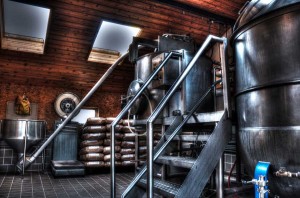
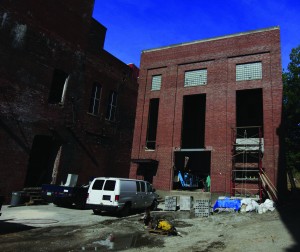
[…] Read more at Toque. […]